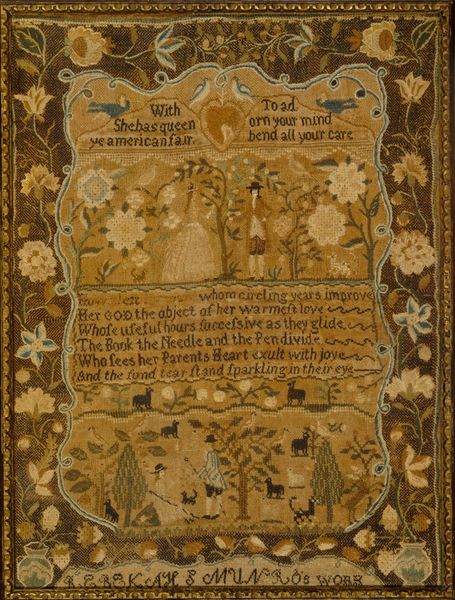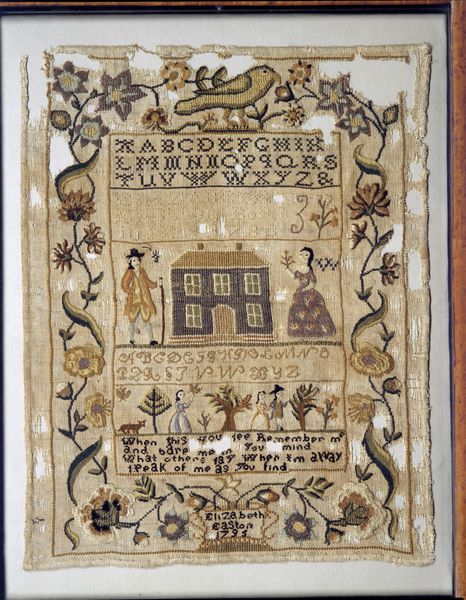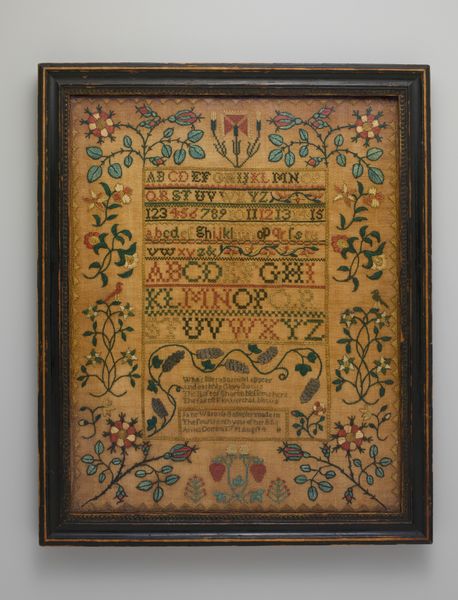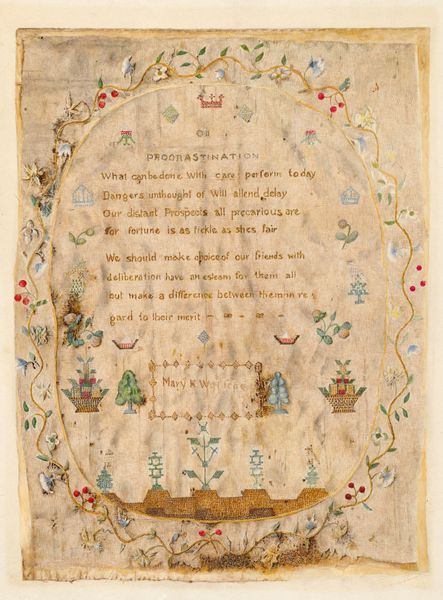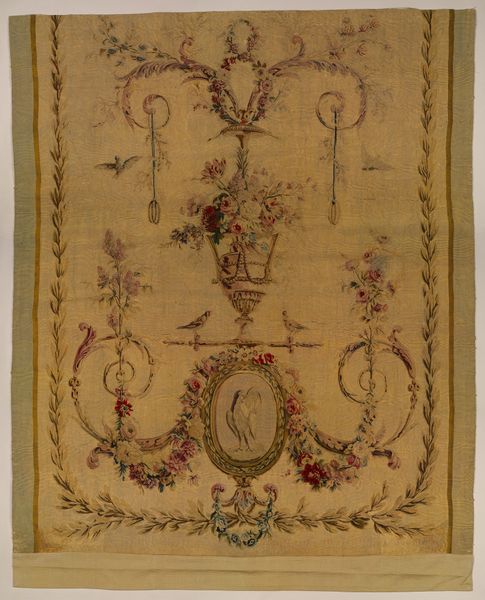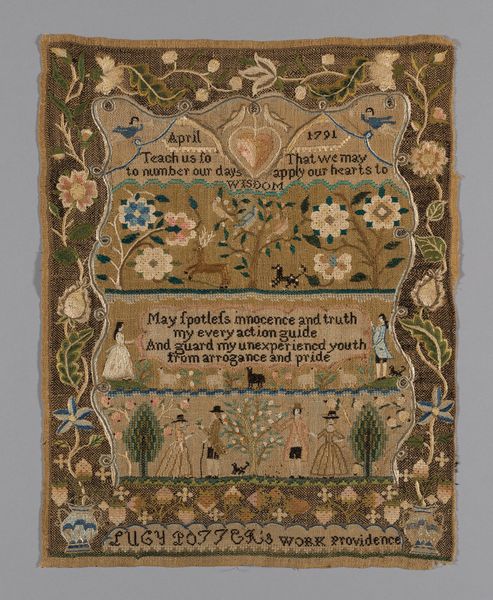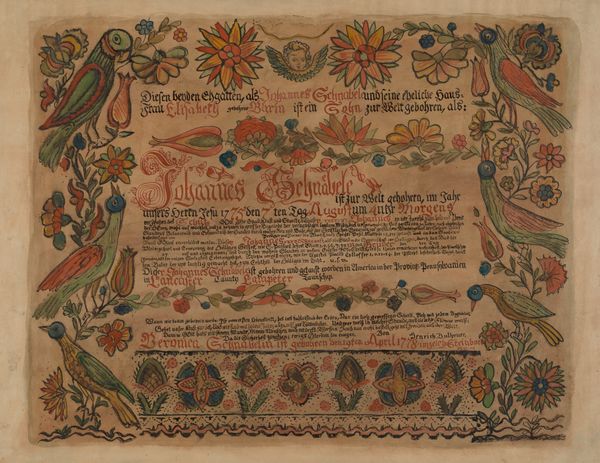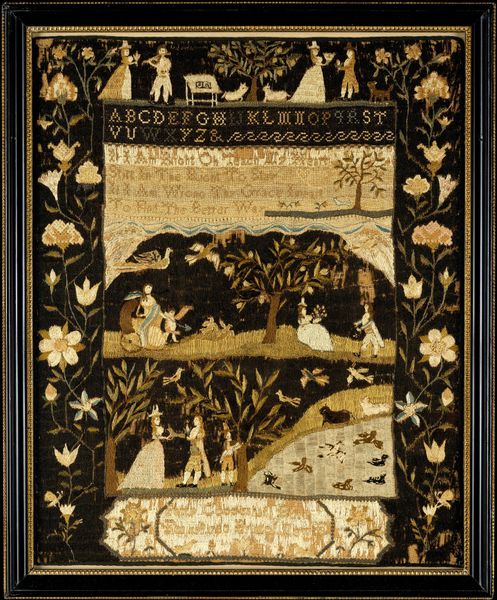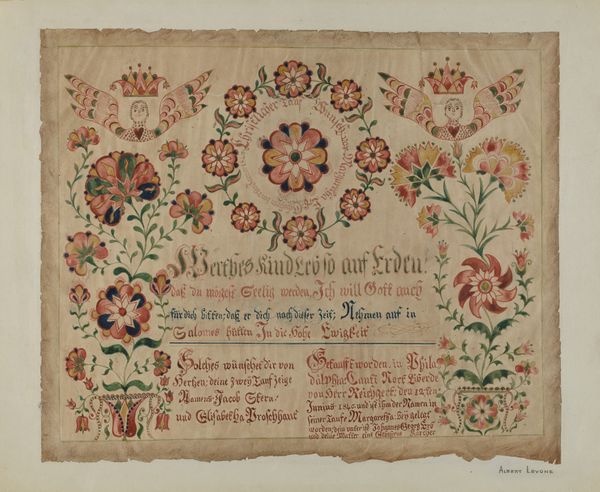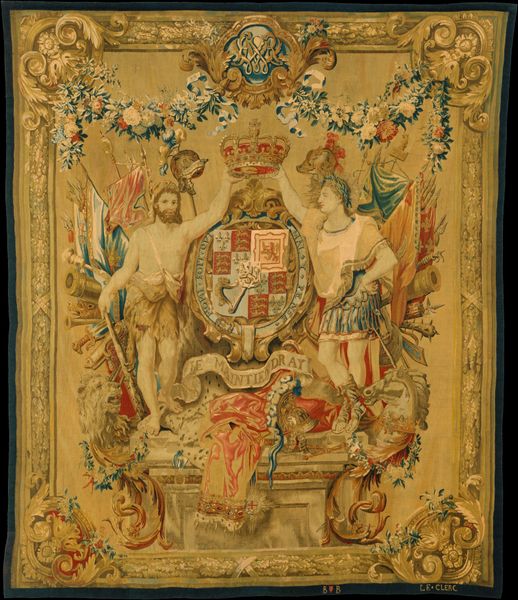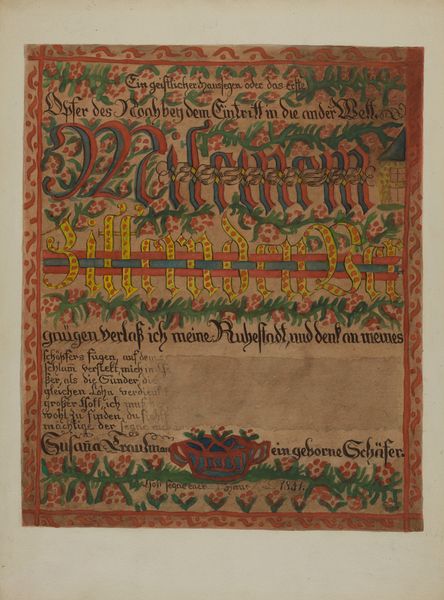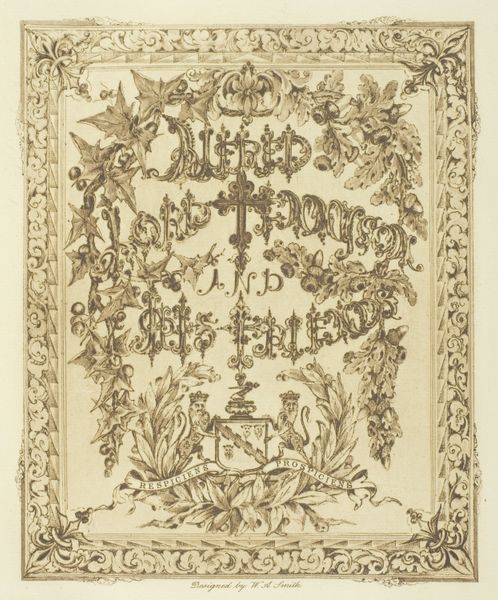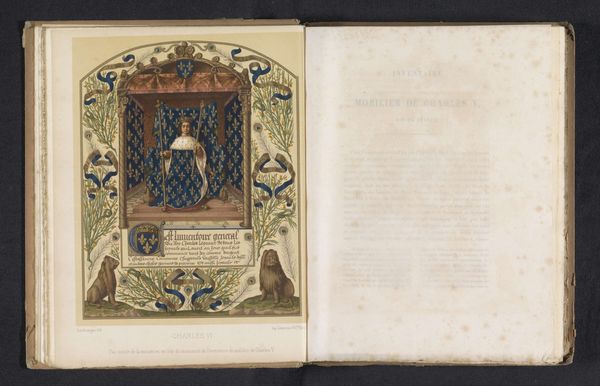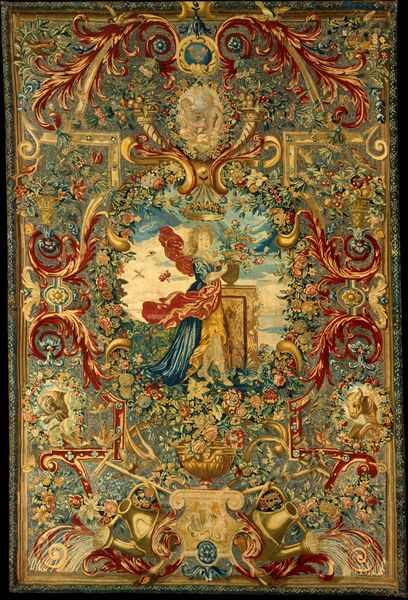
drawing, fibre-art, textile
#
portrait
#
drawing
#
fibre-art
#
landscape
#
bird
#
textile
#
flower
#
house
#
united-states
Dimensions: 13 1/2 x 10 1/4 in. (34.3 x 26 cm)
Copyright: Public Domain
Editor: This is Mary Munro's "Embroidered Sampler," created in 1788. It's a textile piece, featuring a house, people, animals and a decorative border. The needlework feels very intricate, like a world carefully constructed. What social context shaped its creation? Curator: Well, it's important to remember that samplers weren't simply decorative. In late 18th-century America, creating these textile works was an integral part of a young woman's education, particularly for those of a certain social standing. Look at the skill involved; what does that tell us? Editor: That it required patience, and practice! The tiny stitches look incredibly time-consuming. Was it meant to demonstrate a woman's domestic capabilities, or perhaps something more? Curator: Precisely. This sampler acted as a display of virtue, skill, and industry—all desirable qualities in a young woman destined for marriage and motherhood. The composition includes alphabets, verses, and imagery borrowed from printed sources; what does this act of cultural sampling signify? Editor: It seems like a carefully curated self-presentation. Mary Munro wasn’t just showcasing her stitching; she was communicating her values and knowledge. Curator: Exactly. Think about where this would have been displayed – perhaps the family home, a public statement of familial accomplishment and prosperity. Even the verse included, a somewhat altered adaptation, would have offered viewers a glimpse into her moral framework. How do you see the art institutions participating in reinforcing social practices like gender roles through similar displays? Editor: Museums displaying this sampler reinforce historical social roles while enabling a contemporary reflection of our shifting social structures and values. Curator: Yes. The embroidery is now displayed as a historical artifact and we, today, interpret it to examine America’s past through a cultural lens. Thank you, Mary, for helping me see more in-depth ways we participate in a cultural past and how its display has contemporary influences.
Comments
No comments
Be the first to comment and join the conversation on the ultimate creative platform.
